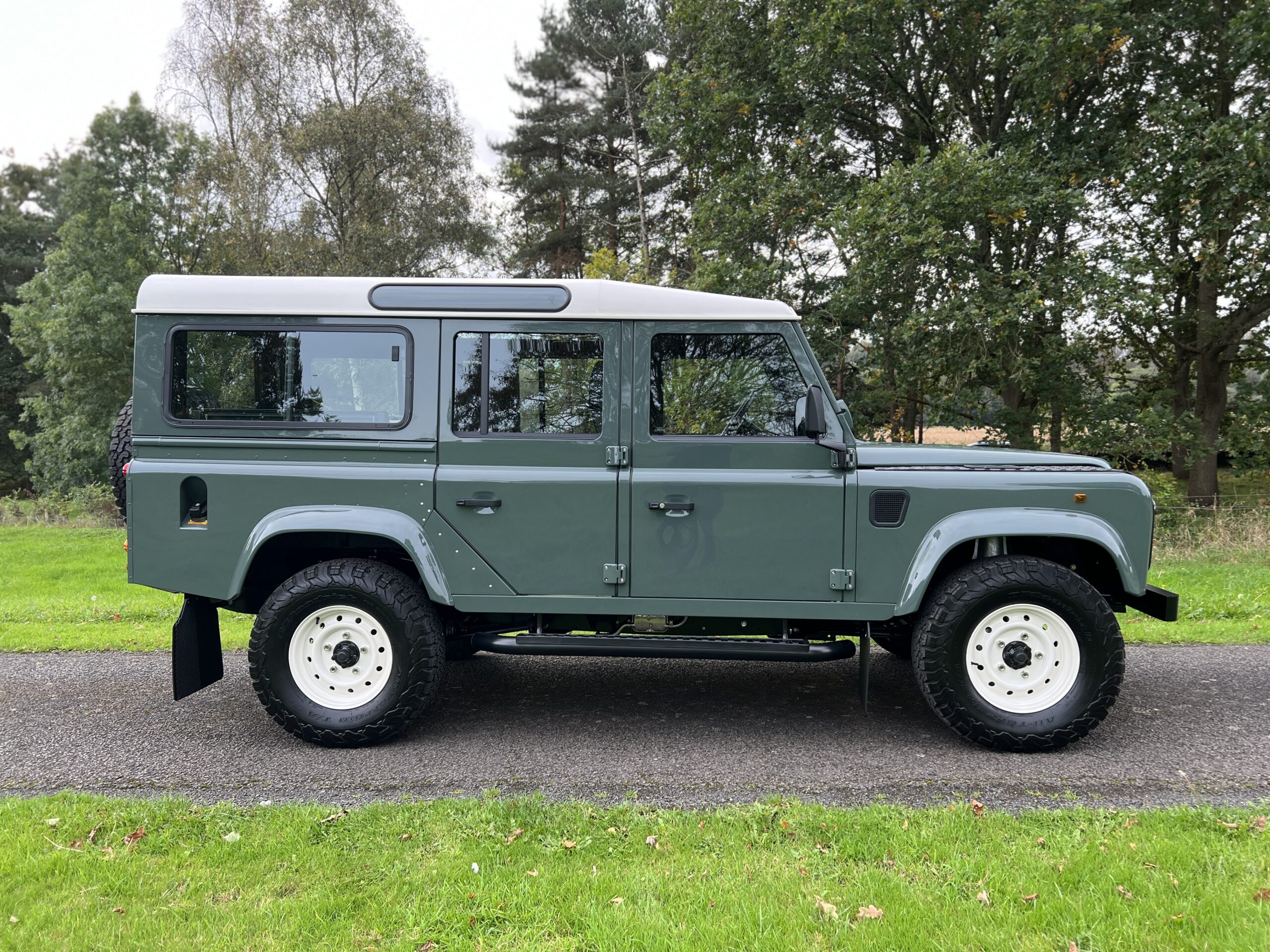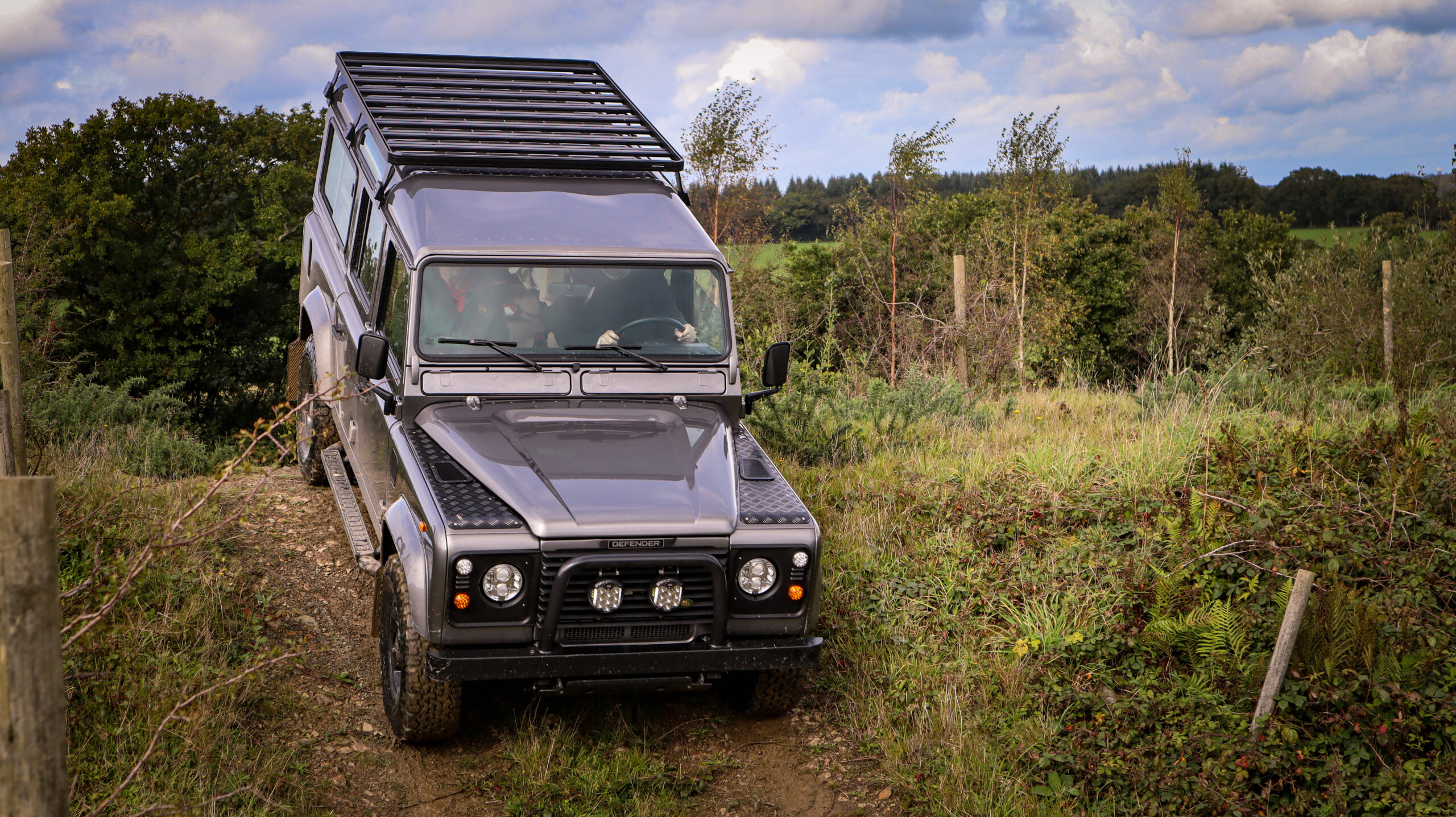
Born in the aftermath of World War II, the classic Land Rover Defender was conceived as a multi-purpose utility vehicle that could traverse any terrain, and withstand the harshest of conditions and environments.
From its beginnings as a farm vehicle to its evolution into a global icon and luxury adventure vehicle, the Defender has been on a continual journey over the last seven decades. But, it’s never lost its core identity throughout all of this time.
Today, it remains a symbol of rugged design, unparalleled durability and versatile functionality, all of which were central to the Defender’s original prototype back in 1947.
To truly appreciate the significance of the classic Defender, we’re going to go back in time to the off-roader’s early days, exploring its concept and inspiration, as well as its design and development.
Keep reading our post below to unearth the captivating origins of this legendary British icon.
The Initial Concept and Inspiration

Following World War II, the British economy was in a dire, desperate situation, and there was an urgent need for vehicles that could serve multiple purposes, whether it be agricultural, industrial, or military.
Inspired by the American post-war Jeep, Maurice Wilks, Rover’s chief designer, envisioned a multi-purpose vehicle that could tackle any terrain. The original idea was to create a “go-anywhere, do-anything” workhorse that could be just as useful on the farm as it was on the battlefield.
The Design and Development

The first Land Rover Series I was launched in 1948 at the Amsterdam Motor Show. It was a utilitarian marvel, designed with simplicity and functionality in mind. The vehicle featured an aluminum body, primarily due to the post-war steel shortage, which inadvertently made it more resistant to rust.
Its boxy design was more a result of function over form, aimed at providing maximum interior space and off-road capability. Over the years, the Series I evolved into Series II and III, each iteration improving upon the last, but the core design principles remained the same.
It wasn’t until 1990 that the vehicle was officially named the “Defender” to distinguish it from the brand’s other offerings, the Discovery and the Range Rover. And so, the Defender 90 and Defender 110 were born, coming with a new 200Tdi diesel engine option, and in 1993, a 300Tdi option.
In 2002, the Defender was upgraded for the millennium, retaining its original robustness but with new zinc-plated steel doors, electric windows, central locking and heated front seats. Five years later, the Defender Td4 2.4 hit the trails with a new engine and six speed wide ratio gearbox, resulting in significantly improved handling and driveability.
The 60th anniversary edition – the SVX – was launched in 2008 with just 200 made for the UK, and unique additions including Recaro seats, alloy gear knobs, a USB socket and iPod cradle. In 2016, after 67 years of production, the run ended with the last ever Land Rover Defender leaving the production line and heading off into history.
The Defender’s Identity
The Defender’s identity is deeply rooted in its British heritage. It has been a vehicle of choice for the British Army, serving in both Iraq wars, Afghanistan and Sierra Leone. The off-roader also served the Royal Family, with Prince Philip being a lifelong Land Rover enthusiast and owner.
But, the appeal of the Defender is universal. From the UK to the US, Africa to Australia, Defender owners exist in every corner of the globe. And, these owners continue to navigate the world’s most challenging terrains and environments.
Whether it be travelling through the African savannah, crossing rivers in South America, or simply cruising through the urban jungles of London or New York, the Defender still thrives on adventure and exploration.
In recent years, the classic’s unique blend of ruggedness and luxury has meant that it’s created a niche of its own, attracting a diverse range of owners. From farmers and outdoor enthusiasts to famous celebrities and urban dwellers, the Defender is for everyone.
The Legacy of the Defender

Despite production stopping in 2016, the legacy of the Defender is far from over. With a worldwide cult following, every year, vintage models are restored and customized to create new, even more powerful classic Defenders for future generations to enjoy.
The vehicle continues to be a symbol of British engineering excellence. In 2020, Land Rover relaunched the Defender with a modern design, yet the model still pays homage to the original. The new Defender aims to capture the essence of its predecessor while integrating modern technology and comfort.
As we look towards the future, the Defender – always staying true to its core identity – will continue to be a symbol of enduring quality and timeless appeal. Its legacy is sure to inspire future generations of off-road vehicles for decades to come.
Restore a Land Rover Defender Classic
Own a vintage Land Rover Defender and want to restore it? At TATC, we restore all popular Land Rover Defender models including NAS look-alikes, Tomb Raider-style 110s, Land Rover Defender 90 soft-tops and hard-tops, Defender 110 soft-top Beachcombers, Land Rover Defender pick-ups and Defender 130 double-cabs.
Whatever your requirements – whether you want to travel to the coast, the mountains or the fields, we can restore your Defender to the highest standards. Our team promises expert engineering, skill and craftsmanship, making your Defender stronger, more capable, more robust and better looking than when it left the factory.
To enquire about restoring a Land Rover Defender classic car, send us a message via the online form, or email us at: hello@tatc.us.com.